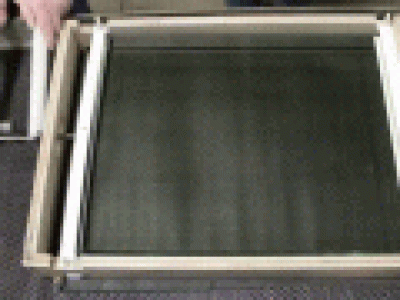Capturer de l'électricité dans du verre
Plus loin dans les coms de ce post https://www.reddit.com/r/interestingasfuck/comments/4ux2zc/electricity_captured_in_glass/ :
"We inject electrons into our acrylic specimens using a 5 million volt, 150 kW particle accelerator called a Dynamitron. "
"I have one of these. It's a Lichtenberg Figure. It's created by bombarding a piece of glass (acrylic in my case) with electricity. Normally free electrons don't last very long but encased in acrylic, they have no way to discharge. Until someone creates a path to ground that is. When someone hits the piece with a hammer it creates a cascade effect as millions of electrical charges ground by burrowing through the matrix, etching out a tree-like structure in the material. Lighting in a bottle!"
Apparemment, c'est une décharge progressive d'une charge initiale statique que le verre (qui est plutôt une plaque de plastique très dure, de l'acrylique) a reçu avant le choc.
Plus loin dans les coms de ce post https://www.reddit.com/r/interestingasfuck/comments/4ux2zc/electricity_captured_in_glass/ :
"We inject electrons into our acrylic specimens using a 5 million volt, 150 kW particle accelerator called a Dynamitron. "
"I have one of these. It's a Lichtenberg Figure. It's created by bombarding a piece of glass (acrylic in my case) with electricity. Normally free electrons don't last very long but encased in acrylic, they have no way to discharge. Until someone creates a path to ground that is. When someone hits the piece with a hammer it creates a cascade effect as millions of electrical charges ground by burrowing through the matrix, etching out a tree-like structure in the material. Lighting in a bottle!"



